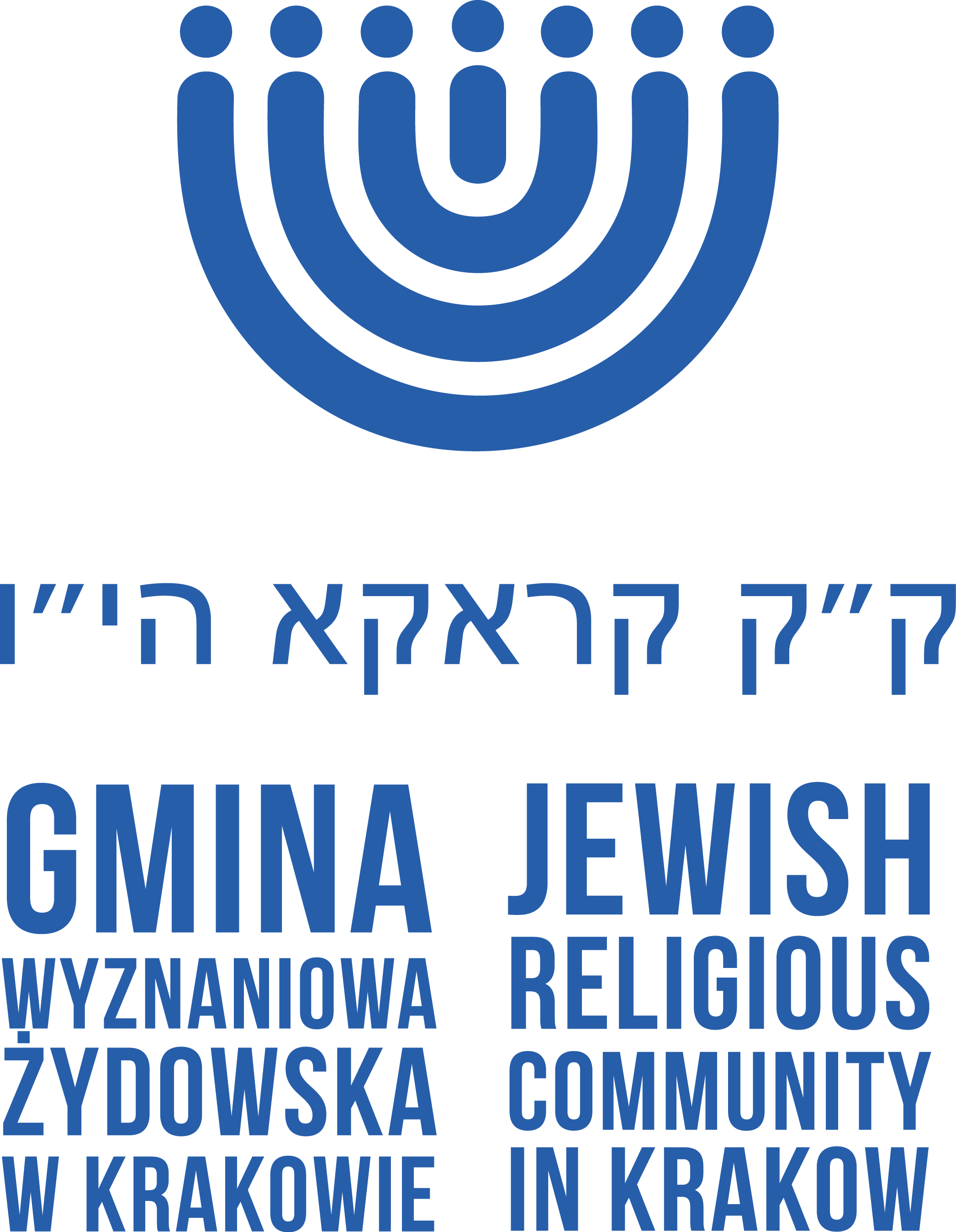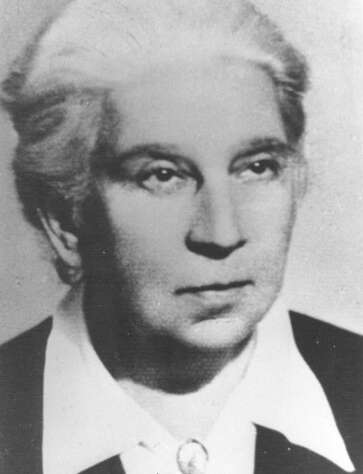BS”D 14 Sivan 5781 Dawid Alter Kurzmann was born in Rzeszow on 25 May 1865. In Kraków he was a trader and a philanthropist. He came to this city in 1887 and lived in Kazimierz on ul. Mostowa 10. After the expulsion in 1941 he was forced to live near Plac Zgody 16 (today’s Plac Bohaterów Getta). He was connected to the chassidic movement and with the Reb Aron house of prayer on ul. Józefa 33. At the same time he was active in the Agudat (“Agudat Israel” , an international political party among Orthodox Jews) and was the vice-president of its Kraków branch. He was active also in the Jewish Community, where he was a council member and responsible for religious matters. Starting already a few…
BS”D 12 Sivan 5781 Gizela Reicher-Thon, may she rest in peace, was born on 23 May 1904. She was a researcher of literature, called the mother of Polish Comparative Literature. In 1914 she finished her general schooling and then studied in private girls’ secondary school. In 1922 she passed her school exam and then read Polish and English philology, linguistic and philosophy in the Jagiellonian University. She defended her doctoral thesis in 1927 while still a student. After that, she worked as a teacher in a Secondary School and in a Jewish charity called Central for the Associations for Orphan Care. In 1933 her doctoral thesis was published. What happened to her in the Second World War is unknown. Photograph from National Archives in Kraków. Translation Dr…
A courtesy translation, by D Cohen, of the statement of the Jewish Religious Community of Kraków of 21 May 2021 at https://gwzkrakow.pl/2021/05/21/oswiadczenie/ could be: The Jewish Religious Community in Kraków informs that yesterday, i.e., 20 May 2021, the District Court of Kraków, in the matter numbered I C 1989/19 has decided favourably for the Community, ordering the Chabad Lubawicz Foundation to remove itself from and give back the Izaak Synagogue, illegally occupied by the Foundation. The sentence, as its grounds, as given orally, completely contradict the position presented until now by the Foundation, which is considered by the court as not true. Details and a scan of the decision will follow soon. The above translation is non-binding and the sole responsibility of the author. The official text…
BS”D 9 Sivan 5781 Architect Ferdynand Liebling, may he rest in peace, was born on 20 May 1877 in Kraków. He graduated from the Industrial School in the same city, which he attended from 1892 to 1896. In the academic year 1903/04 he worked as an assistant in the construction department in the school he had attended. His most famous works include the buildings on ul. Starowiślna 32 (shown below from Wikimedia Commons), Wielopole 9, Dietla 25 and 27, the restructuring of the Jewish hospital on Skawinska 8, Kordeckiego 3 and 5, the restructuring of the Tempel Synagogue and the house of mutual support on ul. Szpitalna 24 and together with Jozua Oberleder the building on Stanisława 12. He was murdered by Germans on 1942, may the…
BS”D 8 Sivan 5781 Maksymilian Rose, son of Eliasz, was born on 19 May 1883 in Przemysl. He was a neurologist, a neuroanatomist and a psychiatrist. He was a professor of neurology and psychiatry in the Stefan Batory University in Vilnius. He finished medical school with distinction in the Jagiellonian University in Kraków. He practised in many European hospitals. During 1911-12 he was an Assistant in the cantonal ward for the mentally ill in Rheinau in Switzerland. Starting on 1912 he worked in the neurology lab in the department of descriptive anatomy of the Jagiellonian University. During the First World War he was a battalion doctor in the Polish Legions and then he directed the neuropsychiatric ward of the military hospitals in Przemysl and Kraków. He also…
BS” D 8 Sivan 5781 Erna Rosenstein was born on 17 May 1913 in Lvov. She was a Jewish painter and poet, who studied at the Vienna Academy for Women (1932-34) and at the Academy of Fine Arts in Kraków (1934-36). She was linked to the Kraków Group, and had a very close artistic friendship with Jonasz Stern. During the Second World War she stayed in the Lvov Ghetto and then hid in Warsaw and Częstochowa. After the war, she worked, among others with Tadeusz Kantor and Jonasz Stern within the Kraków Group. In 1949 she married Artur Sandauer and went to live in Warsaw. After the war she published several poetry books and was a fertile painter. Further information on Wikipedia. Photograph © Jacek Kucharczyk, shown…
BS” D 5 Sivan 5781 Laura Kaufman was born in Kraków on 16 May 1889, the daughter of Bernard. She was a professor of genetics in the agricultural department of the Marie Curie-Skłodowskiej University in Lublin, an excellent biologist and a geneticist, a full member of the Polish Academy of Sciences. On September 1907, the 18-y.o. Kaufman, as one of very few women, started to study in the Jagiellonian University, to which she would be attached for all her life. She died on 9 August 1972. One of her students commented that her death was the ending of an era. She belonged to that generation of Polish scientists, which reconstructed the country after years of oppression. May she rest in peace. (photo from the web-page of the…
BS”D 29 Iyar 5781 Włodzimierz Sztejn (Stein), of blessed memory, son of Naum, was born on 11 May 1913 in Sławuta. Sławuta was a city, in which in 1870 about 65% of the inhabitants were Jewish. Between the two World Wars it was within the USSR, on the border with Poland. During the Second World War the Germans murdered almost all the Jewish inhabitants of Sławuta, and one of the few survivors was Włodzimierz Sztejn. After the German aggression on the USSR on 22 June 1941 he was taken prisoner as a soldier of the Red Army. In order to hide his Jewish origins he destroyed his documents but had to explain his circumcision. He came up with the idea that he could be a Circassian Muslim…
BS”D 28 Iyar 5781 On the 28th of Iyar 5727 (1927) the Arab armies, which had plotted to eradicate the seed of Israel from the land of Israel, were completely decimated. The siege of Israel’s enemies from around her borders was lifted and the Eternal City of Jerusalem was reunited and restored as one city to her natural inheritors. Two days previously, on the 26th of Iyar, the combined armies of Egypt, Syria and Jordan surrounded the borders of Israel and stood poised to attack. Armed from their Soviet allies, they wanted to drive the Jews into the sea. But Providence declared that this was not to be. The army of Israel, even if vastly outnumbered, destroyed the enemy armies and captures vast stretches of territory. On…
BS”D 27 Iyar 5781 The 14th. of May of 1944 saw perhaps the worst German action in Plaszow. Lorries were driven next to the Kinderheim (the foster home for children) and they played a well-known children’s song, called “Mommy give me a horsey” (orig.: Mamatschi schenke mir ein Pferdchen). At that moment the Germans started to amass the children brutally in the lorries. The lorries then left the camp and the Germans murdered the children. Generally that day was regarded as one of the most tragic ones for the whole camp in Plaszow. Less than a year later Germany was defeated and surrendered unconditionally on its knees, the country a mass of ruins. opinions expressed in the text belong solely to the author, and not to the…









